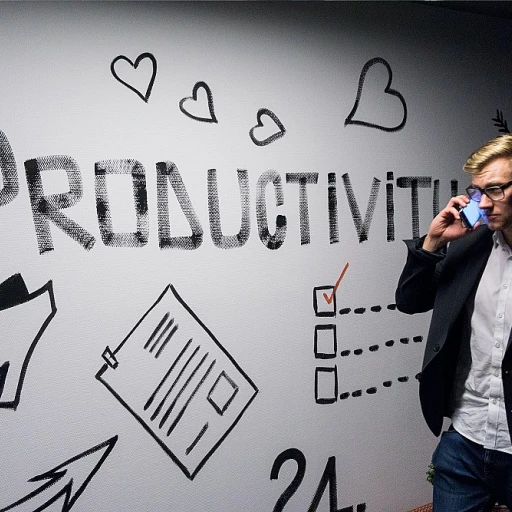
Understanding the Agile Workforce
Facilitating Employee Engagement through Agile Workforce
Understanding the concept of an agile workforce is crucial for companies aiming to enhance work-life balance. Agile workforce methodologies, rooted in flexibility and adaptability, prioritize transforming organizational cultures to accommodate dynamic business needs. For a company, embracing agile work is not just about implementing new strategies. It involves fostering the right skills among team members, where workforce planning and management play pivotal roles. This shift pivots on the mindset of employing flexibility, allowing workers to adapt swiftly to changes while maintaining quality and productivity. The traditional workforce is evolving into a more skill-based and cross-functional team structure. Companies that successfully adapt agile workforce practices often encourage continuous learning and problem solving among their employees. As a result, the workforce becomes more autonomous, empowered, and engaged. For individuals curious about incorporating their passions into their work life, the principle of finding harmony between work and personal interests is increasingly relevant. Building agile teams is not without its challenges, but companies recognize the long-term benefits outweigh the initial hurdles. By nurturing a growth mindset, organizations can foster a blended workforce that contributes positively to the broader business goals, ensuring effective collaboration and increased worker satisfaction.Flexibility: The Cornerstone of Work-Life Balance
The Foundation of Adaptability
Flexibility is the cornerstone of effective work-life balance, particularly in an agile workforce. As companies shift towards agile methodologies, they simultaneously foster a culture that values adaptability and responsiveness to change. This cultural shift encourages organizations to rethink traditional workforce management and adopt more fluid and dynamic work structures.
Agile workforces empower employees by providing a sense of autonomy. Workers are trusted to manage their own time, fostering a sense of responsibility and accountability. This autonomy is crucial in building agile teams that are capable of responding to challenges promptly and maintaining productivity without compromising personal well-being.
Fostering an Adaptable Mindset
Organizations aiming to build agile workforces must cultivate a growth mindset among their employees. This mindset encourages team members to embrace change as an opportunity for personal and professional development. As employees adapt to varying business needs, their skills in problem-solving and workforce agility are enhanced, contributing to the overall success of the organization.
Effective workforce planning in such environments focuses not just on immediate business needs but also on preparing for future work demands. Companies may adopt a blended workforce model, combining full-time employees with contractors or freelancers, to achieve a more agile approach to project management and team dynamics.
Navigating Change Through Collaboration
Cross-functional teams are key players in this agile environment. By bringing together diverse skills and perspectives, these teams enhance problem-solving capabilities and promote innovative solutions. However, successful collaboration requires a shift in mindset from individual contributions to collective success, driving both personal and organizational growth.
For more insights on how to navigate work-life balance in complex roles, explore this comprehensive guide on understanding the responsibilities of a PCA.
Autonomy and Empowerment
Empowering Employees Through Autonomy
In an agile workforce, autonomy is not just a perk but a fundamental principle that empowers employees to thrive. When workers are given the freedom to make decisions, they become more engaged and motivated. This empowerment is crucial for building agile teams that can adapt quickly to change. By fostering a sense of ownership, companies can tap into the full potential of their talent, encouraging a mindset that embraces both individualism and teamwork.
Autonomy in the workplace encourages problem solving and innovation. When team members have the liberty to approach tasks in their own way, they are more likely to develop creative solutions. This freedom also allows them to manage their time effectively, contributing to a better work-life balance. As a result, organizations that prioritize autonomy often see an increase in productivity and employee satisfaction.
Building Trust and Responsibility
Trust is the cornerstone of any successful agile workforce. For employees to feel truly autonomous, management must trust them to deliver results without micromanagement. This trust fosters a culture of responsibility, where team members feel accountable for their contributions. In turn, this responsibility encourages a growth mindset, where individuals are motivated to develop their skills and contribute to the organization’s success.
However, granting autonomy requires careful planning and workforce management. Companies must ensure that their employees have the necessary skills and resources to succeed. Providing ongoing training and support is essential to building agile workforces that are resilient and adaptable. By investing in their people, businesses can create a dynamic environment where autonomy leads to sustainable growth and innovation.
In conclusion, autonomy is a vital component of an agile workforce. By empowering employees and building a culture of trust and responsibility, companies can enhance their workforce agility and improve work-life balance for all team members.
Challenges of Implementing an Agile Workforce
Navigating the Complexities of Agile Implementation
Implementing an agile workforce isn't without its challenges. As organizations strive to shift towards more flexible and adaptive work environments, various hurdles can arise in the planning and execution stages. The transition to agile methodologies often demands a significant change in mindset—both from management and employees. This may involve shifting away from traditional hierarchical structures, which can be a daunting prospect for some companies. There is a natural resistance that comes with change, especially when workers are accustomed to established routines. Encouraging a growth mindset across all levels of the organization is crucial for overcoming this resistance and building agile teams. Workforce management becomes particularly complex when embracing an agile framework. Balancing the need for specialty skills with the advantages of a cross-functional team can be tricky. Workforce planning must be flexible, accommodating varying talent needs without compromising on project outcomes. The ability to adapt swiftly requires an effective strategy for workforce agility—a plan that not only addresses current demands but also anticipates future challenges. Another significant challenge lies in the development and nurturing of skills within the team. As the focus shifts to skills-based roles, continuous learning and development become key. Companies must invest in training and upskilling their talent, ensuring employees are equipped to thrive in an agile work environment. This approach fosters a culture of problem-solving and innovation. Moreover, management may encounter difficulties when trying to measure the success of an agile transformation. Traditional productivity metrics may not fully capture the improvements in flexibility and adaptability that agile workforces bring. Instead, a more holistic approach is needed—one that evaluates both business outcomes and employee well-being. Recognizing the contributions of blended workforce models, including part-time or project-based team members, is vital for understanding the full impact of agile working. In conclusion, while the journey to implementing an agile workforce is fraught with challenges, it is also ripe with opportunities for enhancing productivity and employee satisfaction. Organizations that navigate these complexities successfully will be well-positioned for future work scenarios.The Role of Technology in Supporting Agile Work
Utilizing Technology for an Agile and Flexible Workforce
The integration of technology plays a significant role in enabling agile work and supporting workforce agility. Many companies today leverage advanced tools to facilitate seamless communication and coordination among employees, fostering a more adaptable and efficient work environment. In order to build agile teams, businesses need to equip their team members with the right tools that enable flexibility and collaboration. This can be achieved through:- Remote Work Tools: Platforms that support virtual meetings and project management - such as Zoom, Slack, or Trello - allow employees to work from various locations while staying connected with their teams.
- Cloud-Based Systems: These systems enhance accessibility by providing workers the ability to access important files and resources from anywhere at any time, thereby promoting a flexible and skill-based work approach.
- Collaboration Software: Offering functionalities like document sharing, real-time editing, and task management, collaboration tools can help employees stay aligned with organizational goals.
Measuring Success: Productivity and Well-being
Evaluating Impact: Performance and Satisfaction
An agile workforce requires not just efficient work methods but also a strategic approach to evaluating performance. This requires a balance between productivity metrics and the well-being of employees. A successful implementation of agile methodologies demands thorough workforce management practices that not only focus on output but also on the job satisfaction of the team members.
To measure productivity effectively, organizations need to adopt skills-based assessments in tandem with traditional evaluation methods. This approach helps in identifying individual and team strengths, paving the way for targeted workforce planning. By doing this, businesses can ensure that the right talent is allocated to the right tasks, maximizing efficiency without compromising employee morale.
Employee well-being, however, must be approached with equal importance. This is because the mental and emotional health of workers can significantly influence their performance. Companies should foster a culture of flexibility adaptability where employees are encouraged to voice their concerns and suggest improvements. In an agile working environment, cross-functional teams benefit from open communication and a growth mindset, facilitating problem-solving and promoting overall job satisfaction.
For a balanced approach, management should leverage technology to gather feedback from employees, continuously fostering improvement in both their work environment and processes. Technological tools can facilitate real-time feedback loops and encourage transparent communication. This method helps management to make informed decisions that promote both organizational goals and the well-being of agile teams.
Building and sustaining an agile workforce relies on the foundation of performance and well-being assessments. By focusing on these areas, companies can cultivate rewarding and effective work environments that support both employee satisfaction and business success.












